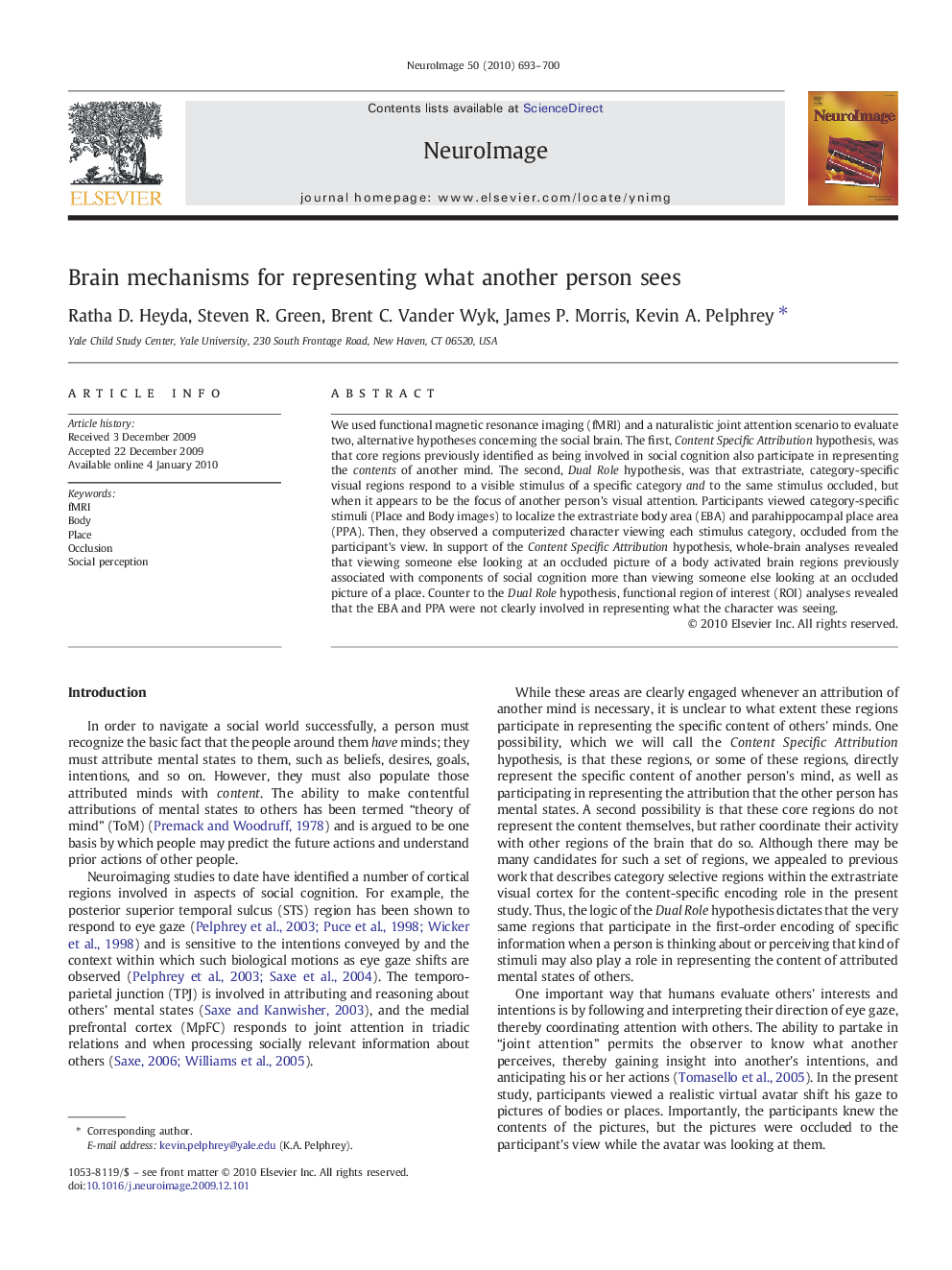| کد مقاله | کد نشریه | سال انتشار | مقاله انگلیسی | نسخه تمام متن |
|---|---|---|---|---|
| 6036617 | 1188777 | 2010 | 8 صفحه PDF | دانلود رایگان |
عنوان انگلیسی مقاله ISI
Brain mechanisms for representing what another person sees
دانلود مقاله + سفارش ترجمه
دانلود مقاله ISI انگلیسی
رایگان برای ایرانیان
کلمات کلیدی
موضوعات مرتبط
علوم زیستی و بیوفناوری
علم عصب شناسی
علوم اعصاب شناختی
پیش نمایش صفحه اول مقاله

چکیده انگلیسی
We used functional magnetic resonance imaging (fMRI) and a naturalistic joint attention scenario to evaluate two, alternative hypotheses concerning the social brain. The first, Content Specific Attribution hypothesis, was that core regions previously identified as being involved in social cognition also participate in representing the contents of another mind. The second, Dual Role hypothesis, was that extrastriate, category-specific visual regions respond to a visible stimulus of a specific category and to the same stimulus occluded, but when it appears to be the focus of another person's visual attention. Participants viewed category-specific stimuli (Place and Body images) to localize the extrastriate body area (EBA) and parahippocampal place area (PPA). Then, they observed a computerized character viewing each stimulus category, occluded from the participant's view. In support of the Content Specific Attribution hypothesis, whole-brain analyses revealed that viewing someone else looking at an occluded picture of a body activated brain regions previously associated with components of social cognition more than viewing someone else looking at an occluded picture of a place. Counter to the Dual Role hypothesis, functional region of interest (ROI) analyses revealed that the EBA and PPA were not clearly involved in representing what the character was seeing.
ناشر
Database: Elsevier - ScienceDirect (ساینس دایرکت)
Journal: NeuroImage - Volume 50, Issue 2, 1 April 2010, Pages 693-700
Journal: NeuroImage - Volume 50, Issue 2, 1 April 2010, Pages 693-700
نویسندگان
Ratha D. Heyda, Steven R. Green, Brent C. Vander Wyk, James P. Morris, Kevin A. Pelphrey,